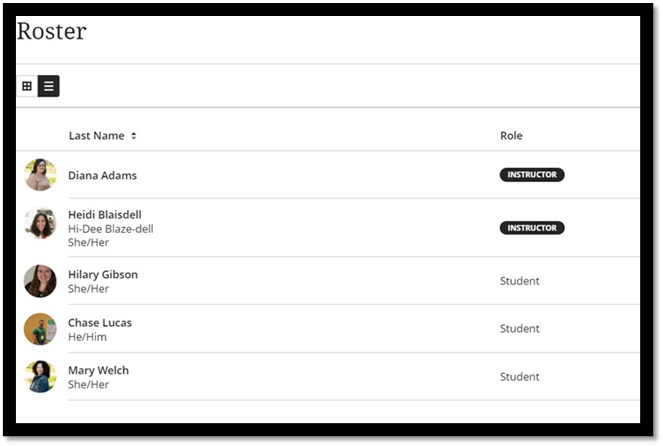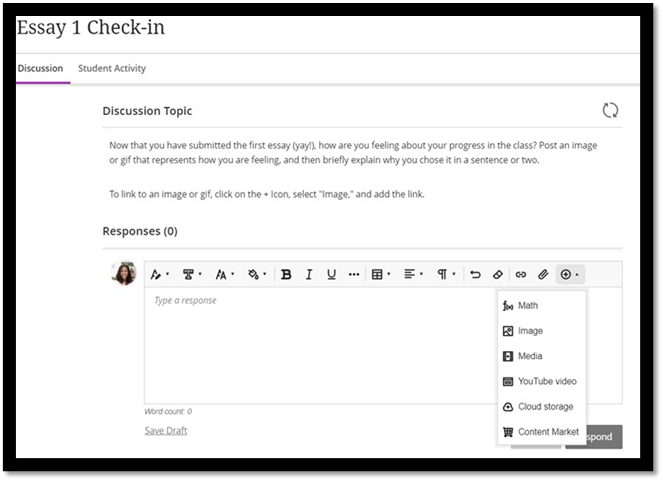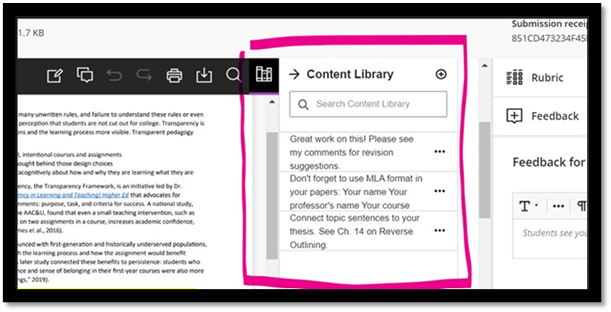Building Human Presence in Online Courses
A few years ago, when I was teaching an online composition course, one of my students came to my office for a conference. As I put my hand out to introduce myself, she exclaimed in relief, “Oh! It is so good to see that you are a real person!” My face-to-face classes offered plenty of impromptu opportunities for my students to see me as a real person — they could see my facial expressions (emotion), hear my humor and laughter, and interact with me on a more personal level. I realized that my online class was missing this important human element.
According to Garrison et al. (2000), there are three types of instructor presence in online classes that contribute to their Community of Inquiry (COI) framework: teaching presence, cognitive presence, and social presence (88-89). The intersection of all three of these elements is still regarded as crucial in generating positive student experiences and outcomes (Singh, 2022). Online teaching presence, related to the design of the course and clarity of expectations, and cognitive presence, related to communication that contributes to knowledge construction (such as discussion responses) may seem intuitive for building rigorous online courses. However, online instructors need to also consider how they are integrating a social presence. This presence is more about the degree to which students see their instructor as a real person.
When instructors are intentional about building their social presence in their online classes, it can have a big impact on student outcomes. In their study of 23 online classes at two community colleges, Jaggers and Xu (2016) found that although other course design elements are helpful, “only the quality of interpersonal interaction within a course relates positively and significantly to student grades.” Since the pandemic and its toll on isolation, more recent research acknowledges instructor social presence on student wellbeing. For example, creating space for quality human interactions, such as supportive tone in communication and other indicators that instructors care about students and their success, has been tied to more inclusive, equitable course climates (Pacansky-Brock et al., 2020). Social presence especially has been linked to improving students’ sense of trust and belonging — both of which contribute to students’ willingness to engage in collaborative learning, take academic risks, and express themselves (Singh et al., 2022).
Ultra Tools that Support Social Presence
Marshall’s Hybrid Checklist, the QM (Quality Matters) rubric, and the Blackboard Exemplary Course Program all emphasize instructor interaction. Evidence-based strategies shown to specifically build instructor social presence in online classes include posting a welcome video, inviting students to introduce themselves and share relevant personal stories, communicating regularly, and providing timely, supportive feedback (Singh et al., 2022; adapted from Wang, 2010). As you are developing or enhancing your online courses, consider incorporating these Ultra tools to connect with students:
(1) Post a Welcome Video using Panopto, which is integrated with Ultra. This video should be relatively short, no more than five minutes. Allow viewers to see your face (rather than just a slideshow) and don’t worry about making it perfect. Students feel more engaged when they can see you as human — your facial expressions and gestures, your um’s and sense of humor — rather than a slickly edited video (Pacansky-Brock et al., 2020). Check out our Panopto tutorial in our Teaching and Learning Knowledge Base to create your own welcome video.
Watch Welcome Video: Dr. Saken, Physics Professor at Marshall University

(2) Fill out your Profile on Base Navigation and encourage your students to do the same. Once you have added pronunciation (you can also add the name you wish to be called here, such as “Dr. Jones”), preferred pronouns, and picture, all this information shows up inside the course. Class participants can see this information in the class Roster, Discussion board and in other communication channels. This means that when you are interacting with your students and they are interacting with one another, you can connect faces to names and refer to one other by what you wish to be called.

(3) Discussions and Conversations are tools that can be used for cultivating personal interactions as well as academic ones. Icebreaker or check-in discussions are a great way for students to get to know one another and feel seen. Consider encouraging multimodal responses, such as a video, image, or gif so that students can express themselves in different ways (Pacansky-Brock et al, 2020). You can also give students an opportunity to converse within other content items. For example, in an assignment, click “Allow class conversations” to empower students to help each other with questions and build a sense of mutual support.

(4) Use the Content Library in the Annotation toolbar to save time on feedback. While giving regular, supportive feedback is crucial to cultivating instructor presence, this can take considerable time, especially in writing-intensive courses. To better manage the workload, consider adding general comments from your Content Library to address common concerns or praise. Then, you can personalize your feedback by including the student’s name and a brief customized note.

Additional Resources
- To learn more about teaching best practices in Blackboard Ultra, register for our next cohort of Ultra Academy. Faculty who complete the course earn a Credly badge.
- Check out Creating a Sense of Belonging through Social Presence, which offers strategies that anticipate potential student concerns related to belonging.
- Community of Inquiry Framework from Purdue University offers a closer look at how distinct aspects of instructor presence impact the learning experience.
References
Garrison, D. R., Anderson, T, & Archer, W. (2000). Critical inquiry in a text-based environment: Computer conferencing in higher education. The Internet and Higher Education, 2, 87–105.
Jaggars, S. S., & Xu, D. (2016). How do online course design features influence student performance? Computers and Education, 95, 270-284. https://go.exlibris.link/YqVSjMVw
Pacansky-Brock, M., Smedshammer, M., & Vincent-Layton, K. (2020). Humanizing Online Teaching to Equitize Higher Education. Current Issues in Education, 21(2 (Sp Iss). Retrieved from https://cie.asu.edu/ojs/index.php/cieatasu/article/view/1905
Singh, J., Singh, L., & Matthees, B. (2022). Establishing Social, Cognitive, and Teaching Presence in Online Learning—A Panacea in COVID-19 Pandemic, Post Vaccine and Post Pandemic Times. Journal of Educational Technology Systems, 51(1), 28–45. https://go.exlibris.link/RsWCPMYn
Wang, Hong (2010). Eight ways to increase social presence in your online classes. Faculty Focus, Higher Ed Teaching and Learning. Retrieved from https://www.facultyfocus.com/articles/online-education/online-course-delivery-and-instruction/eight-ways-to-increase-social-presence-in-your-online-classes/